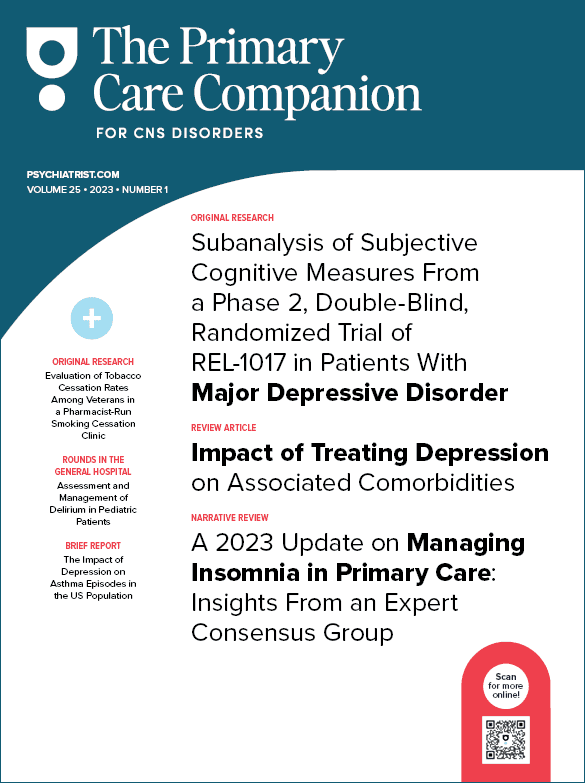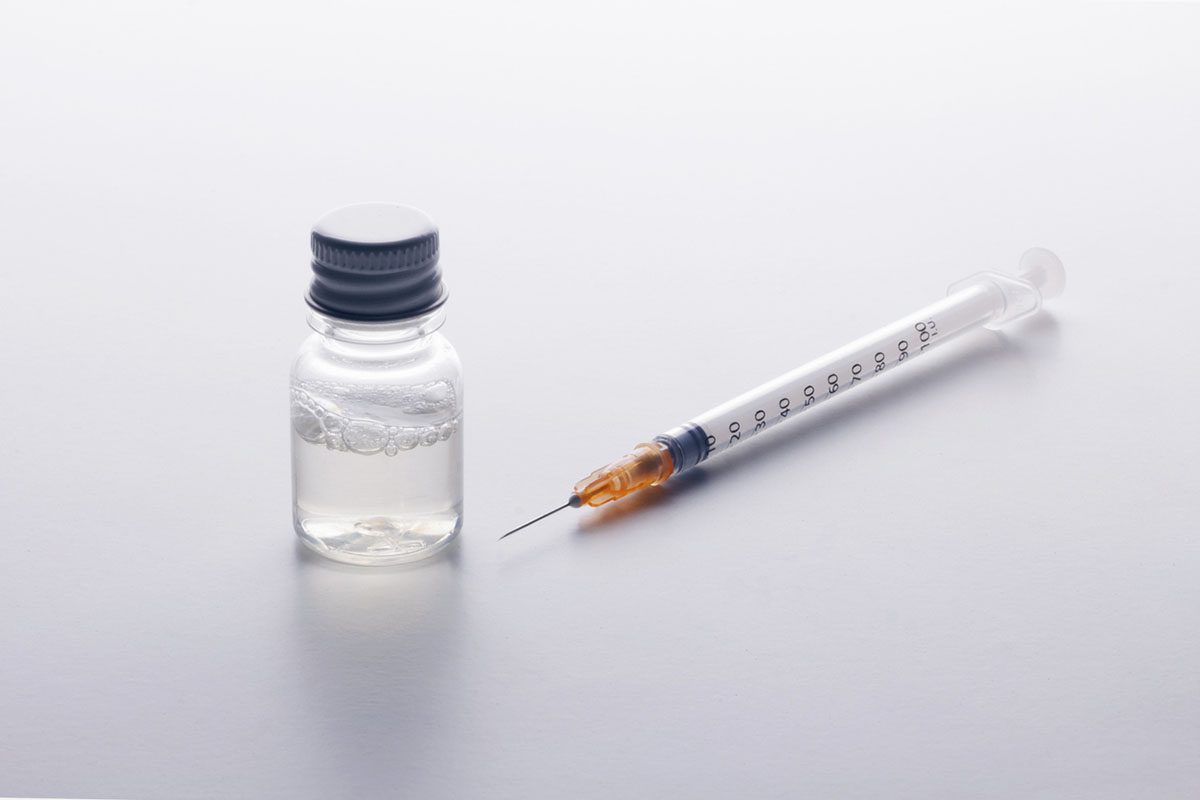Prim Care Companion CNS Disord 2023;25(2):23lr03484
To cite: Asnis GM. Lurasidone-induced urinary retention: options? Prim Care Companion CNS Disord. 2023;25(2):23lr03484.
To share: https://doi.org/10.4088/PCC.23lr03484
© 2023 Physicians Postgraduate Press, Inc.
aDepartment of Psychiatry and Behavioral Sciences, Montefiore Medical Center/Albert Einstein College of Medicine, Bronx, New York
*Corresponding author: Gregory M. Asnis, MD, 16 Greenmeadow Rd, Pleasantville, NY 10570 ([email protected]).
See case report by Varghese et al.
To the Editor: The report by Varghese and colleagues1 provides further documentation (the second case report of its kind) that lurasidone appears to be implicated in drug-induced urinary retention. This is not surprising, since many psychotropics, including other atypical antipsychotics, also share this adverse event (AE).2–4 This observation by the authors1 should sensitize clinicians to evaluate all patients who are prescribed lurasidone for this AE. As they state,1 males are more vulnerable to this AE than females, but particular care should be taken for patients with a history of urinary obstruction or an enlarged prostate.2,3 Thus, elderly males may be particularly at risk, although females are still subject to this AE, as was the case in the patient presented by Varghese and colleagues.1 In general, this AE rarely occurs and is mostly of mild severity.2–4 Occasionally, urinary retention can suddenly worsen, requiring a medical intervention to prevent kidney or bladder damage.5,6 Thus, urinary retention demands careful clinical attention. As demonstrated by the authors1 and similarly presented by Asnis and colleagues,2 this AE usually appears within days of a dose escalation and quickly dissipates upon dose reduction or discontinuation, thus being reversible.
One critical clinical issue to consider is what options are available to deal with a patient who develops lurasidone-induced urinary retention but also has had a significant clinical response, as occurred in the patient presented by Varghese and colleagues.1 One option is to lower the dose of lurasidone, since psychotropic-induced urinary retention appears to be dose dependent.1,2 As demonstrated by Varghese and colleagues,1 lowering the dose led to a full remission of the urinary retention problem, but, unfortunately, the lowered dose was inadequate to sustain the patient’s clinical response. In their presentation, the authors1 failed to explore other treatment strategies that might have allowed the lurasidone dose to be continued as is and thus not jeopardize the loss of the clinical response. One alternative strategy might be to continue drug treatment (eg, lurasidone) but add an α-1A antagonist like tamsulosin 0.4 mg/d (given orally) to treat urinary retention. Since α-1 stimulation causes constriction of the urethral internal sphincter as well as the detrusor muscle of the bladder and smooth muscle of the prostate resulting in reduced micturition,3 antagonism of the α-1 receptor (one of the pharmacologic effects of tamsulosin) should relieve urinary retention. Tamsulosin is approved by the US Food and Drug Administration for urinary flow problems secondary to benign prostatic hypertrophy.7 Off label, tamsulosin has been successfully used in levomilnacipran and other antidepressant-induced urinary retention cases with response occurring within hours and without inducing any additional side effects. Furthermore, the response was sustained for the duration of treatment (approximately 10 weeks). Although there have been no reports of the efficacy of tamsulosin in antipsychotic-induced urinary retention, it may be worth considering when a patient is having a good clinical response to an antipsychotic treatment like lurasidone, particularly when alternative treatments for the patient’s diagnosis (eg, bipolar depression) are limited, as was seen in the case presented by Varghese and colleagues.1
Dr Varghese and colleagues were shown this letter and declined to comment.
Published online: April 4, 2023.
Relevant financial relationships: None.
Funding/support: None.
References (7)

- Varghese R, Czuma R, Cohen-Oram A, et al. A case of lurasidone-induced urinary retention. Prim Care Companion CNS Disord. 2022;24(6):21cr03220. PubMed CrossRef
- Asnis GM, Caneva E, Henderson MA. A review of antidepressant-induced urinary hesitancy: a focus on levomilnacipran ER including two case presentations (5633). Expert Opin Drug Saf. 2016;15(5):717–725. PubMed CrossRef
- Walker NF, Brinchmann K, Batura D. Linking the evidence between urinary retention and antipsychotic or antidepressant drugs: a systematic review. Neurourol Urodyn. 2016;35(8):866–874. PubMed CrossRef
- Verhamme KMC, Sturkenboom MC, Stricker BH, et al. Drug-induced urinary retention: incidence, management and prevention. Drug Saf. 2008;31(5):373–388. PubMed CrossRef
- Mustonen S, Ala-Houhala IO, Tammela TL. Characteristics of protein excretion in patients with acute urinary retention. BJU Int. 2001;87(3):187–191. PubMed CrossRef
- Johansson RM, Malmvall BE, Andersson-Gäre B, et al. Guidelines for preventing urinary retention and bladder damage during hospital care. J Clin Nurs. 2013;22(3-4):347–355. PubMed CrossRef
- Plochocki A, King B. Medical Treatment of benign prostatic hyperplasia. Urol Clin North Am. 2022;49(2):231–238. PubMed CrossRef
Enjoy free PDF downloads as part of your membership!
Save
Cite
Advertisement
GAM ID: sidebar-top




